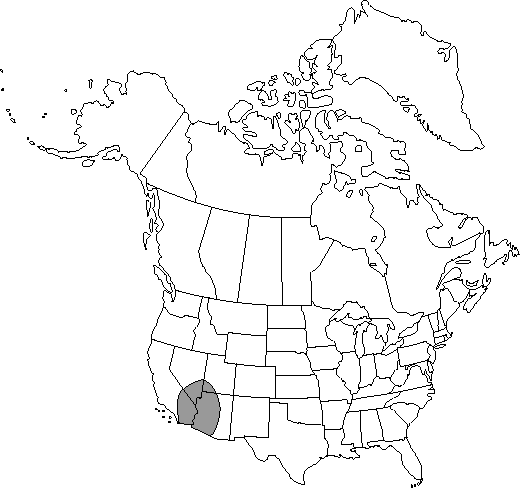Ephedra fasciculata
Amer. J. Bot. 21: 573. 1934.
Shrubs erect or prostrate, 0.5–1 m. Bark gray, cracked and fissured. Branches opposite or whorled, rigid, angle of divergence about 30°. Twigs pale green, becoming yellow with age, not viscid, usually smooth or very slightly scabrous, with numerous longitudinal grooves; internodes 1–5 cm. Terminal buds conic, 1–3 mm, apex obtuse. Leaves opposite, 1–3 mm, connate to 1/2–3/4 their length; bases membranous, brown, shredding and becoming gray with age, ± persistent; apex obtuse. Pollen cones 2–several at node, ellipsoid to obovoid, 4–8 mm, sessile; bracts opposite, 4–8 pairs, light yellow, obovate, 2–3 × 2 mm, membranous, slightly connate at base; bracteoles exceeding bracts; sporangiophores 3–9 mm, 1/4–3/4 exserted, with 6–10 sessile to short-stalked (less than 1 mm) microsporangia. Seed cones 2–several at node, obovoid to ellipsoid, 6–13 mm, sessile or on short peduncles; bracts opposite, 4–7 pairs, elliptic, 3–7 × 2–4 mm, membranous with light brown to green, thickened center and base, slightly connate at base, margins entire. Seeds 1(–2), ellipsoid, 5–12 × 3–5 mm, light brown, longitudinally furrowed.
Phenology: Coning March–April.
Habitat: Dry rocky slopes, washes, and sandy areas
Elevation: 300–1200 m
Distribution

Ariz., Calif., Nev., Utah.
Discussion
Selected References
None.